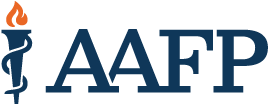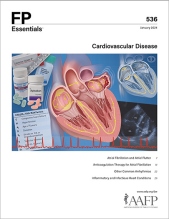
This clinical content conforms to AAFP criteria for CME.
Premature atrial contractions (PACs) occur in nearly all individuals. Although typically asymptomatic, they can cause palpitations. PACs previously were considered benign, but there is increasing recognition that frequent PACs are associated with developing atrial fibrillation. After potentially reversible causes (eg, electrolyte abnormalities, hyperthyroidism) are eliminated, symptomatic PACs can be treated with beta blockers; some patients are candidates for ablation. Premature ventricular contractions (PVCs) also are common, occurring in more than two-thirds of the population. They typically are asymptomatic, but some patients experience palpitations and dizziness. Persistent PVCs are associated with underlying heart disease; an echocardiogram can help detect this disease. Reversible causes (eg, electrolyte abnormalities, hyperthyroidism, stimulant drug use) should be excluded. Patients with PVCs and left ventricular dysfunction are candidates for ablation. Others may be treated with beta blockers, nondihydropyridine calcium channel blockers, or antiarrhythmics. Supraventricular tachycardia also is common. Hemodynamically unstable patients are treated with cardioversion. Stable symptomatic patients can be considered for catheter ablation or medical antiarrhythmics. Finally, sinus node dysfunction, previously called sick sinus syndrome, causes a variety of rhythm disturbances, including bradycardia, sinus arrest, bradycardia-tachycardia syndrome, and others. Unstable patients are treated with atropine to increase heart rate. Stable patients should discontinue bradycardia-causing drugs, if possible. Some may require a pacemaker.
Subscribe
From $350- Immediate, unlimited access to FP Essentials content
- 60 CME credits/year
- AAFP app access
- Print delivery available
Edition Access
$44- Immediate, unlimited access to this edition's content
- 5 CME credits
- AAFP app access
- Print delivery available
